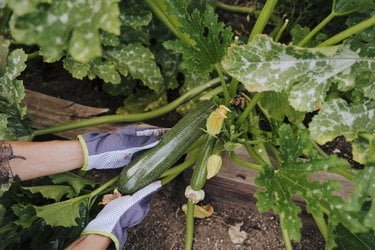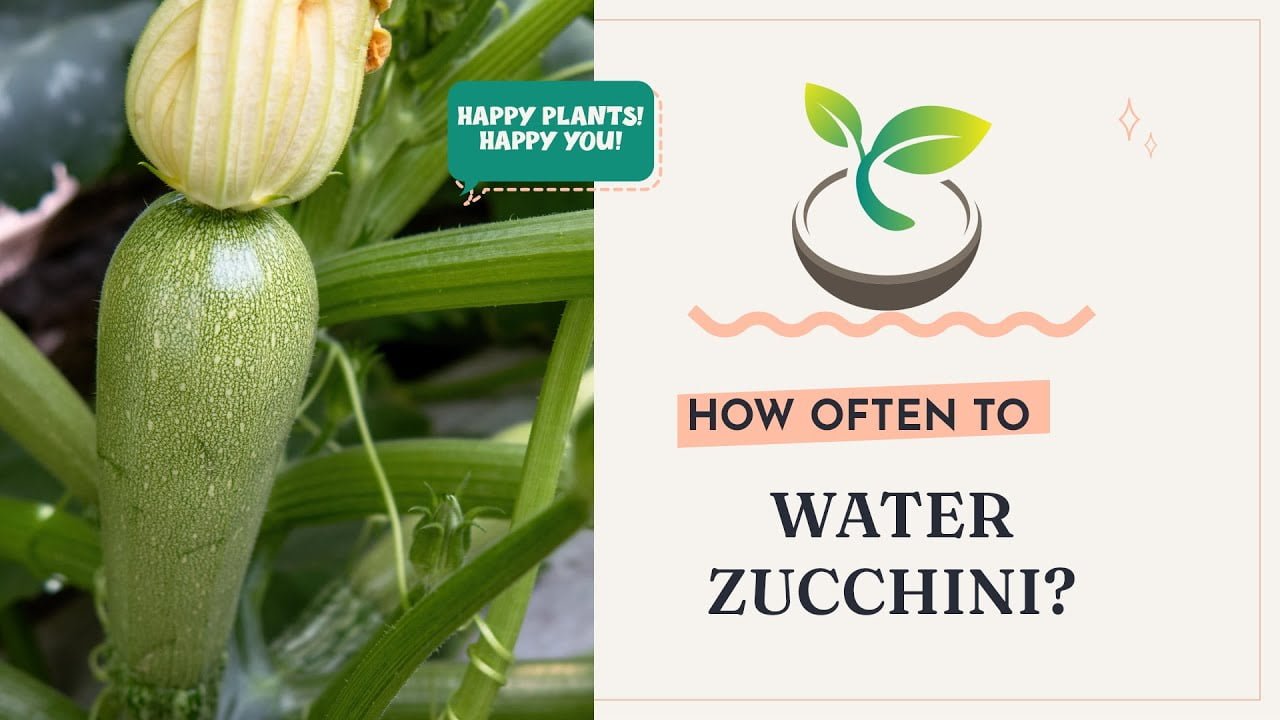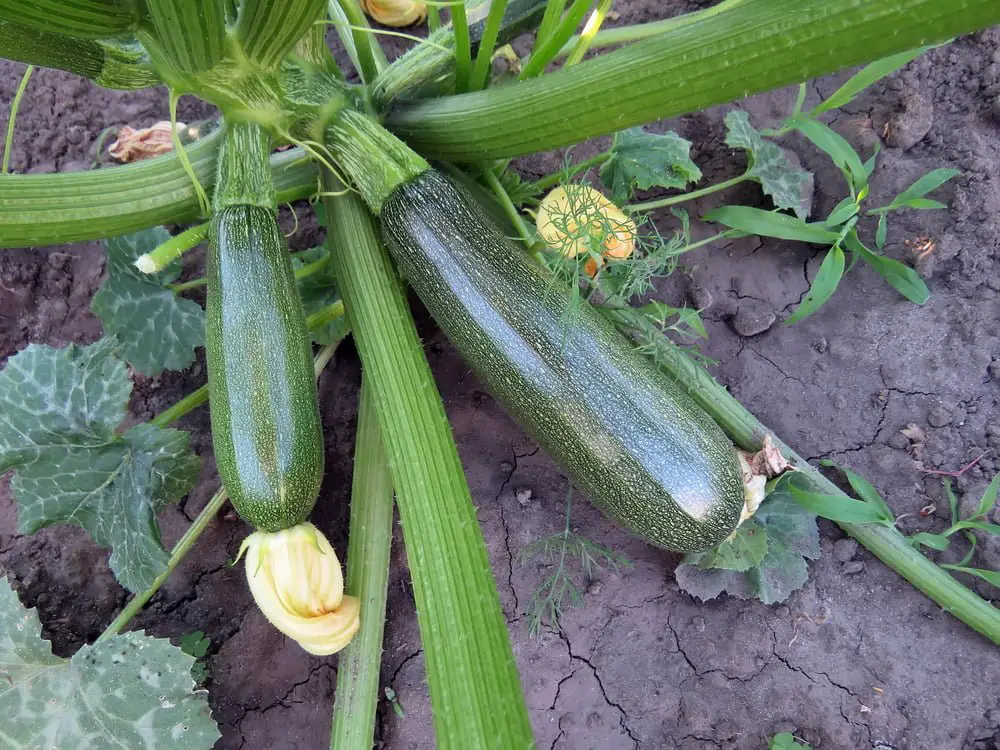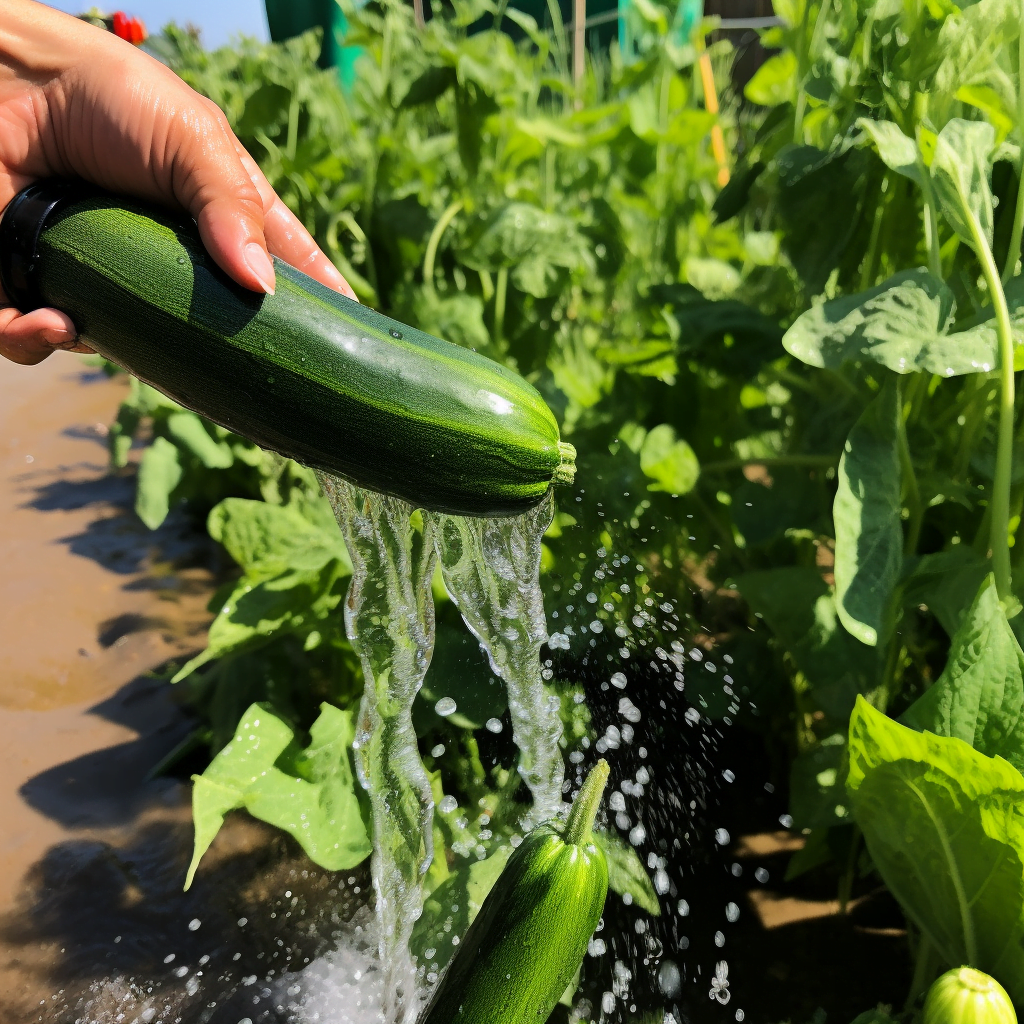Zucchini, like many other plants, requires a specific amount of water to thrive and produce optimal yields. In order to ensure the success of your zucchini garden, it is crucial to understand the water requirements of this versatile vegetable. By exploring the ideal moisture levels, frequency of watering, and potential challenges, you can provide your zucchini plants with the right amount of hydration, allowing them to flourish and yield a bountiful harvest. Get ready to discover the secrets of watering zucchini and become a pro at keeping these green wonders happy and hydrated!
Factors Affecting Water Requirements of Zucchini
Climate
The climate plays a crucial role in determining the water requirements of zucchini plants. Hot and dry climates typically result in higher rates of evaporation, leading to increased water needs for the plants. On the other hand, cooler and more humid climates may require less frequent watering. It’s important to take into account the specific climate conditions in your area when determining the watering needs of your zucchini plants.
Growth Stage
The growth stage of zucchini plants also influences their water requirements. Young and newly transplanted zucchini plants require more frequent watering compared to mature plants. This is because their root systems are still developing and are not yet efficient in absorbing water from the soil. As the plants grow and mature, their water needs generally decrease. It’s essential to adjust your watering schedule and amount accordingly as the zucchini plants progress through different growth stages.
Soil Type
Soil type plays a significant role in determining the water-holding capacity and drainage capabilities. Sandy soils tend to drain quickly and require more frequent watering, while clay soils have higher water-holding capacity and may need less frequent watering. Understanding the composition of your soil and its characteristics is crucial in determining the optimal watering regimen for your zucchini plants.
Understanding the Water Needs of Zucchini
Optimal Soil Moisture Levels
To ensure the healthy growth and development of zucchini plants, it’s important to maintain optimal soil moisture levels. Zucchini plants thrive when the soil is consistently moist but not waterlogged. The ideal soil moisture level for zucchini plants is around 70-80% of the field capacity. Field capacity refers to the maximum amount of water the soil can retain after excess water has drained away. By maintaining the appropriate soil moisture levels, you can provide an ideal environment for the plants to grow and produce high-quality zucchinis.
Monitoring Soil Moisture
Regularly monitoring the soil moisture levels is vital in understanding the water needs of zucchini plants. There are various methods to assess soil moisture, including visual inspection, soil moisture meters, and tensiometers. Visual inspection involves physically checking the soil by inserting a finger or a garden tool to determine its moisture content. Soil moisture meters provide a more accurate reading by measuring the electrical conductivity of the soil. Tensiometers, on the other hand, measure the soil tension, indicating how tightly the water is held by the soil particles. By using these monitoring methods, you can gauge when it’s time to water your zucchini plants.
Watering Methods
Choosing the right watering method is crucial in meeting the water requirements of zucchini plants. The two common methods used are overhead watering and drip irrigation. Overhead watering, such as sprinklers, can be effective in evenly distributing water over a large area. However, it may result in wastage due to evaporation and inefficient water delivery to the roots. Drip irrigation is a more efficient method as it delivers water directly to the root zone, minimizing water loss and maximizing absorption. This method ensures that the zucchini plants receive a consistent water supply, promoting healthy growth.
Calculating Water Requirements for Zucchini Plants
Evapotranspiration
Understanding evapotranspiration is crucial in calculating the water requirements for zucchini plants. Evapotranspiration refers to the combined process of evaporation from the soil surface and transpiration from the leaves of plants. It represents the amount of water that is lost to the atmosphere through these processes. By tracking evapotranspiration rates specific to your climate and zucchini plant variety, you can estimate the daily water requirements and adjust your watering accordingly.
Watering Frequency and Amount
Determining the watering frequency and amount is crucial in meeting the water requirements of zucchini plants. To calculate the watering frequency, consider factors like climate, soil type, and plant growth stage. For example, zucchini plants in hot and dry climates may require watering every 2-3 days, while in cooler and more humid environments, watering every 4-5 days may suffice. The watering amount can be estimated by considering the evapotranspiration rates and the moisture-holding capacity of the soil. Striking the right balance in watering frequency and amount will help ensure that your zucchini plants receive an adequate and consistent water supply.
Irrigation Techniques for Zucchini Plants
Drip Irrigation
Drip irrigation is a highly recommended irrigation technique for zucchini plants. It involves the use of a network of tubes and emitters that deliver water directly to the root zone. Drip irrigation provides several benefits, including reduced water wastage, minimized weed growth, and increased water efficiency. By delivering water directly to the root zone, drip irrigation ensures optimal moisture levels and reduces the risk of fungal diseases caused by wet leaves. This method is particularly useful when cultivating zucchini in areas with limited water availability.
Sprinkler Irrigation
Sprinkler irrigation is another commonly used technique for watering zucchini plants. It involves the use of overhead sprinklers that distribute water over the plants. While sprinkler irrigation may not be as efficient as drip irrigation in terms of water conservation, it can cover larger areas and provide uniform moisture distribution. However, it’s crucial to use the sprinklers during the cooler parts of the day to minimize water loss due to evaporation. Additionally, proper nozzle selection and calibration are essential to avoid excessive water runoff and ensure that the water reaches the root zone effectively.
Furrow Irrigation
Furrow irrigation is a traditional irrigation technique where shallow channels are created between the rows of zucchini plants, and water flows through these channels. This method can be effective in certain situations, particularly when zucchini plants are grown in flat or gently sloping fields. However, furrow irrigation may result in uneven water distribution and water loss through runoff. It requires careful management to ensure that the water reaches the entire root zone of the plants evenly.

Mulching for Water Conservation
Benefits of Mulching
Mulching is an effective technique for conserving water and maintaining optimal soil moisture levels for zucchini plants. Mulch acts as a protective layer over the soil, reducing evaporation and minimizing weed growth. By providing insulation, mulch helps to regulate soil temperature and retain moisture, reducing the need for frequent watering. Mulching also improves soil structure, prevents soil erosion, and promotes healthier root development.
Types of Mulch
Various types of mulch can be used for zucchini plants, including organic and inorganic options. Organic mulches, such as straw, wood chips, or compost, provide additional benefits as they gradually decompose and enrich the soil with nutrients. Inorganic mulches, such as plastic or landscape fabric, offer longer-lasting weed suppression and moisture retention. The choice of mulch depends on factors such as availability, cost, aesthetic preference, and specific requirements of your zucchini plants.
Mulching Techniques
To effectively mulch your zucchini plants, first, prepare the soil by removing any existing weeds. Apply a layer of mulch around the plants, ensuring that it covers the soil surface evenly. Maintain a thickness of 2-4 inches to provide adequate insulation and suppress weed growth. Avoid piling mulch directly against the plant stems to prevent moisture-related diseases. Regularly monitor the moisture levels in the soil, as the mulch can influence the rate of evaporation. Adjust the watering frequency and amount accordingly to maintain optimal soil moisture levels.
Managing Water Stress in Zucchini Plants
Recognizing Signs of Water Stress
Water stress occurs when the water requirements of zucchini plants are not adequately met. Some common signs of water stress include wilting leaves, leaf curling, leaf yellowing, and stunted growth. The plants may also exhibit decreased fruit production and poor fruit quality. By regularly inspecting your zucchini plants and staying vigilant for these signs, you can identify and address water stress issues promptly.
Remedial Measures
When managing water stress in zucchini plants, it’s essential to take immediate action to prevent further damage. Provide a thorough watering to rehydrate the plants, ensuring that the water reaches the root zone. Mulching can also help by conserving moisture and reducing further water loss. Adjust your watering schedule and amount based on the specific needs of the stressed plants. Additionally, consider providing temporary shade or using shade cloths to minimize water loss through excessive transpiration. Paying close attention to the signs of water stress and taking remedial measures promptly can help restore the health and vitality of your zucchini plants.

Tips for Efficient Watering of Zucchini
Watering Schedule
Establishing a consistent watering schedule is crucial for efficiently meeting the water needs of zucchini plants. Develop a watering schedule based on the specific requirements of your climate, soil type, and zucchini variety. Take into account factors such as evapotranspiration rates, growth stage, and weather conditions. Consistency is key to ensure that the plants receive a consistent water supply without overwatering or underwatering.
Proper Watering Techniques
Using proper watering techniques is essential to maximize water absorption and minimize wastage. Water the zucchini plants at the base and avoid wetting the leaves excessively, as this can lead to fungal diseases. Direct the water flow to the root zone and ensure that the soil is thoroughly moistened. Consider using a watering can, garden hose with a nozzle, or drip irrigation for precise water delivery. Avoid fast and forceful watering, as it can lead to soil erosion and inefficient water absorption.
Water Conservation Practices
In addition to efficient watering techniques, practicing water conservation is crucial for sustainable gardening. Collect rainwater in barrels or containers to reuse for watering your zucchini plants. Additionally, consider using graywater from household sources, such as dishwashing or shower water, after ensuring it’s safe for irrigation. Minimize water loss through evaporation by watering during the cooler parts of the day, such as early morning or late evening. Regularly monitor and adjust your watering practices based on the specific needs of your zucchini plants to ensure optimal water usage.
Common Watering Mistakes to Avoid
Overwatering
Overwatering is a common mistake that gardeners often make, especially when it comes to zucchini plants. Providing excessive water can lead to waterlogging, root rot, and the development of fungal diseases. It’s important to strike a balance between providing adequate moisture and avoiding overwatering. Regularly monitor soil moisture levels and adjust your watering practices accordingly to avoid this common pitfall.
Underwatering
Underwatering is equally detrimental to the health and growth of zucchini plants. Insufficient water supply can lead to wilting, stunted growth, and reduced fruit production. It’s crucial to maintain consistent soil moisture levels and ensure that the zucchini plants receive an adequate water supply. Adjust your watering schedule and amount to meet the specific needs of your plants, especially during periods of high heat and dryness.
Improper Timing
Timing is key when it comes to watering zucchini plants. Avoid watering during the hottest part of the day, as this can result in excessive evaporation and hinder efficient water absorption by the plants. Watering in the early morning or late evening allows the plants to absorb water before the sun’s intensity increases, reducing moisture loss. By paying attention to the timing of your watering routine, you can optimize water usage and promote healthy growth in your zucchini plants.

Importance of Consistent Watering
Impact on Plant Health
Consistent watering is vital for maintaining the overall health and vitality of zucchini plants. Proper water supply ensures that the plants receive essential nutrients, minerals, and oxygen from the soil. Inadequate watering can lead to nutrient deficiencies and hinder the plants’ ability to absorb the necessary elements for growth. By providing a consistent water supply, you promote robust root development, lush foliage, and improved disease resistance in your zucchini plants.
Yield and Fruit Quality
Consistent watering directly impacts the yield and quality of zucchini fruits. Insufficient water supply can result in reduced fruit production, smaller-sized fruits, and poor taste. On the other hand, overwatering can lead to larger but less flavorful fruits. A consistent and balanced watering regimen allows the zucchini plants to develop and mature fruits to their optimal size and flavor. By meeting their water requirements, you can maximize the yield and enjoy delicious zucchinis from your garden.
Conclusion
Understanding and meeting the water requirements of zucchini plants is essential for their overall health and productivity. Factors such as climate, growth stage, and soil type significantly influence their water needs. By monitoring soil moisture, calculating watering requirements, and employing appropriate irrigation techniques, you can provide an optimal water supply to your zucchini plants. Mulching, efficient watering practices, and avoiding common watering mistakes further contribute to water conservation and plant health. With consistent watering, you can ensure the successful growth of your zucchini plants and enjoy a bountiful harvest of delicious zucchinis.



